How to Create a Visual Schedule
July 24, 2016Is it Autism or is it Adolescence? Key points in understanding the difference between the two!
August 8, 2016Learning about healthy relationships is an important part of any person’s development.
For some people, this learning doesn’t come naturally or automatically, and it can be particularly challenging when living in a world where examples of unhealthy relationships are all around us. For people on the spectrum, or who may be vulnerable in their approach with people, it is even more important to teach the ‘Healthy Relationship’ concept explicitly (using very clear language and straightforward descriptions and explanations). And this can be done at any age or developmental stage.
So how do we do this?
We suggest beginning with lots of visual supports and with lots of visual mapping as to what healthy relationships might look like. As a person grows and develops, we suggest introducing different ideas and exploring different types of relationships, but the basis will always be the same and should always touch on the concepts of mutual respect, boundaries and consent.
Social safety can also be explored as part of learning about healthy relationships. Questions like “how do I keep myself safe”, “what can I do if I feel uncomfortable” are really important to work through with people of any age, and offer opportunities to then create personal safety plans (this is especially important for teens who are approaching the adult world and are at the stage in their lives of pushing boundaries and trying new things).
How do you support learning about healthy relationships with the people you support? We’d love to hear!
Our ‘Healthy Relationships – A Social Skills Program for Teens & Young Adults” offers a practical approach to supporting the learning of this concept and is available in both printed and electronic versions.
